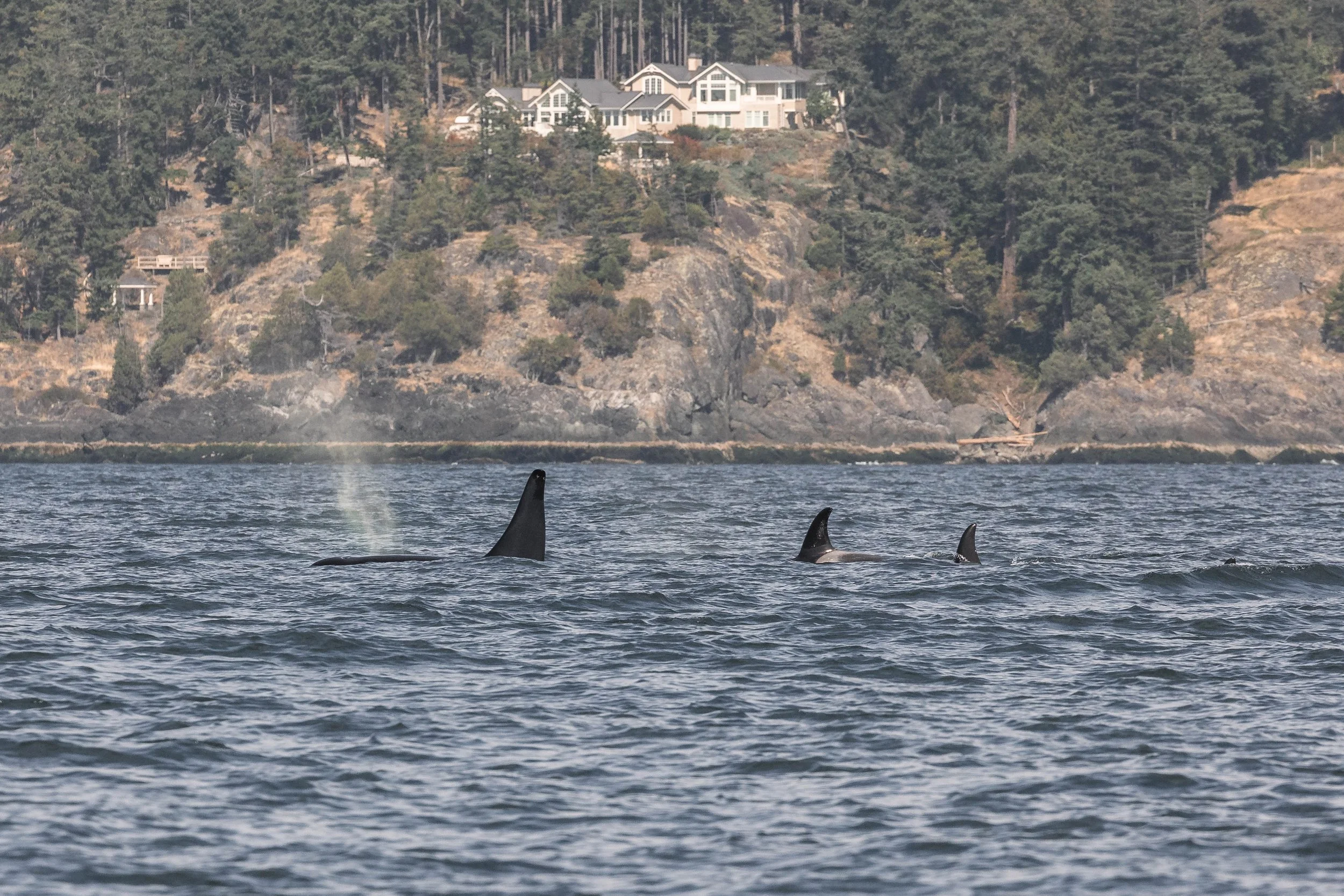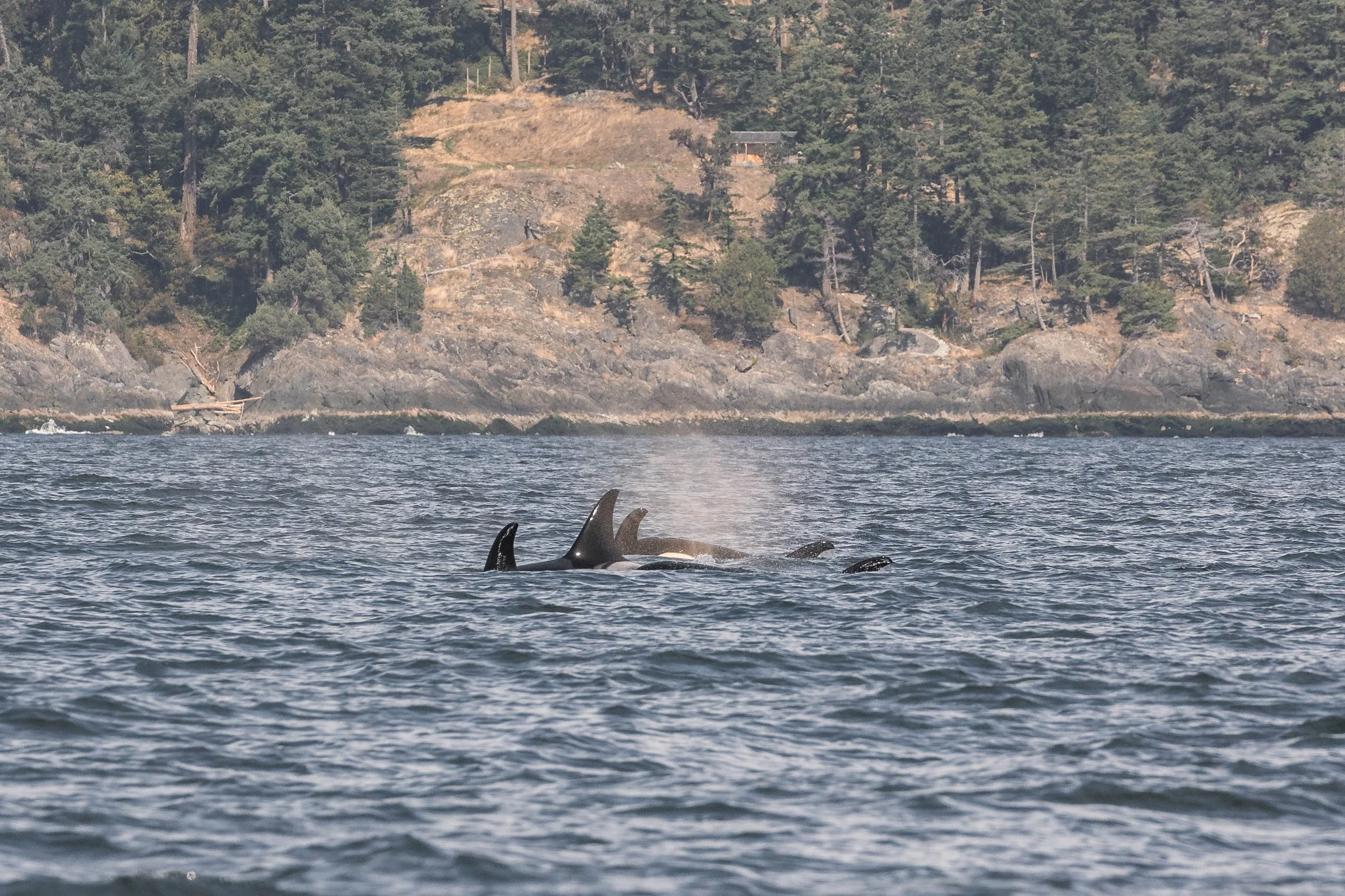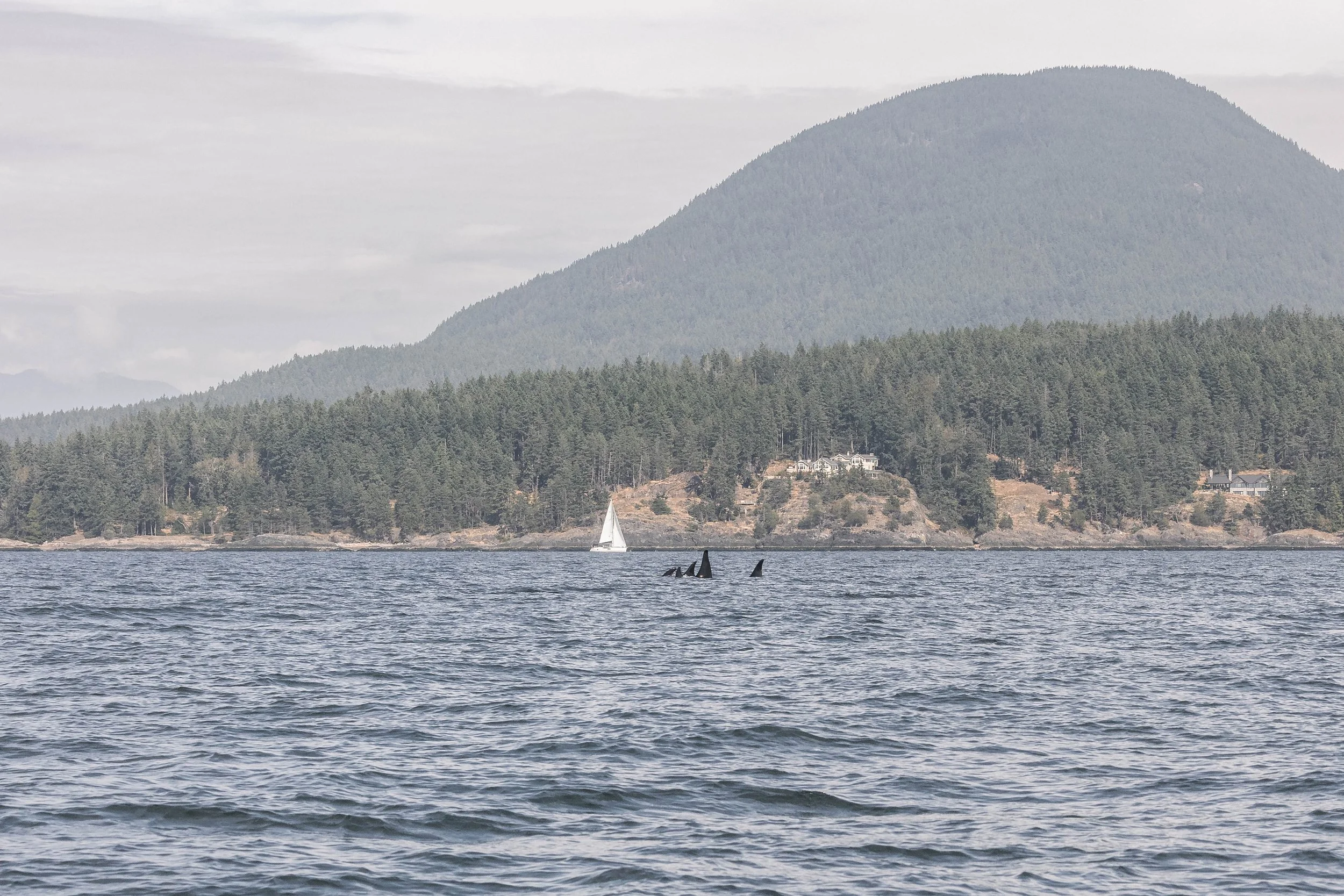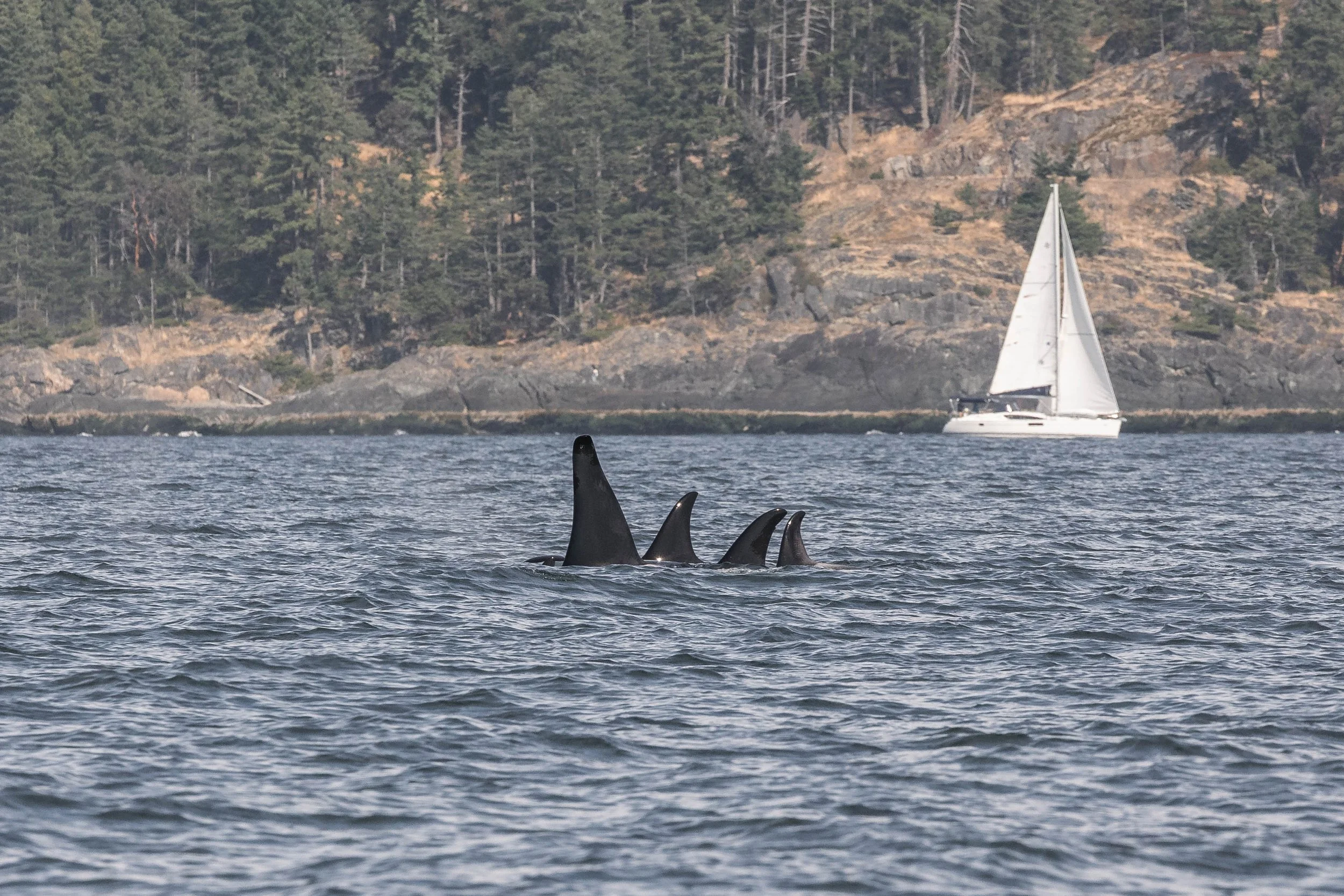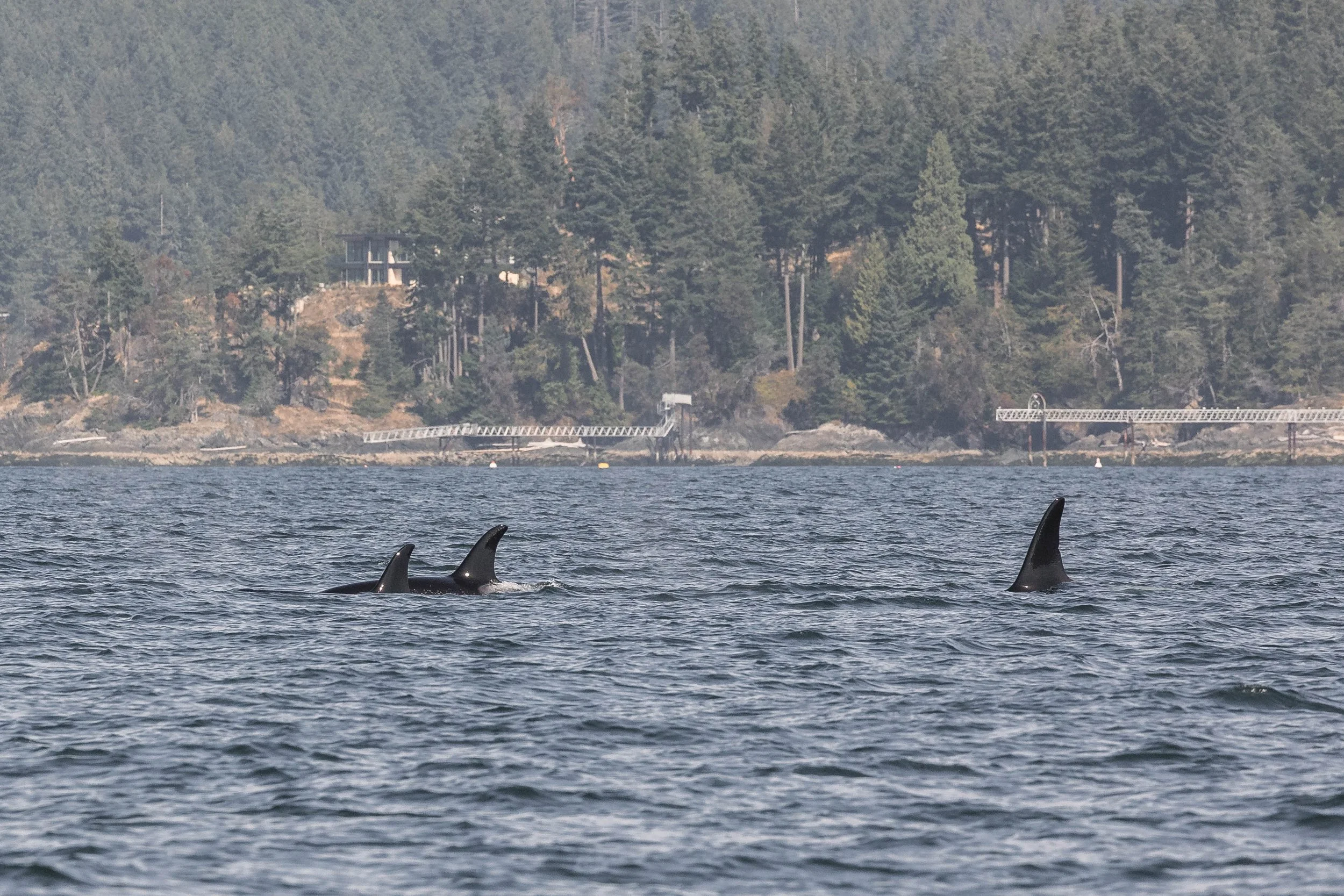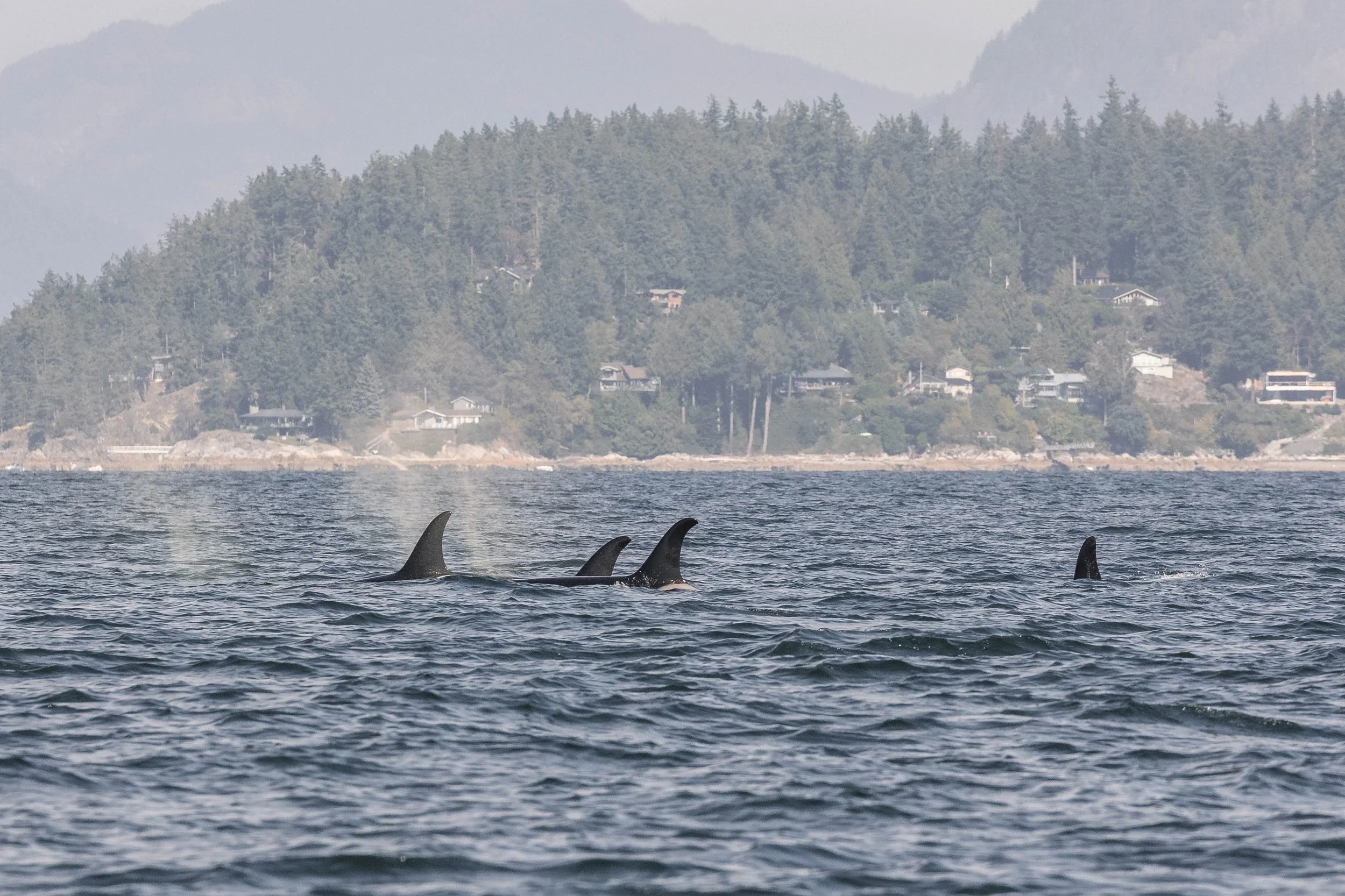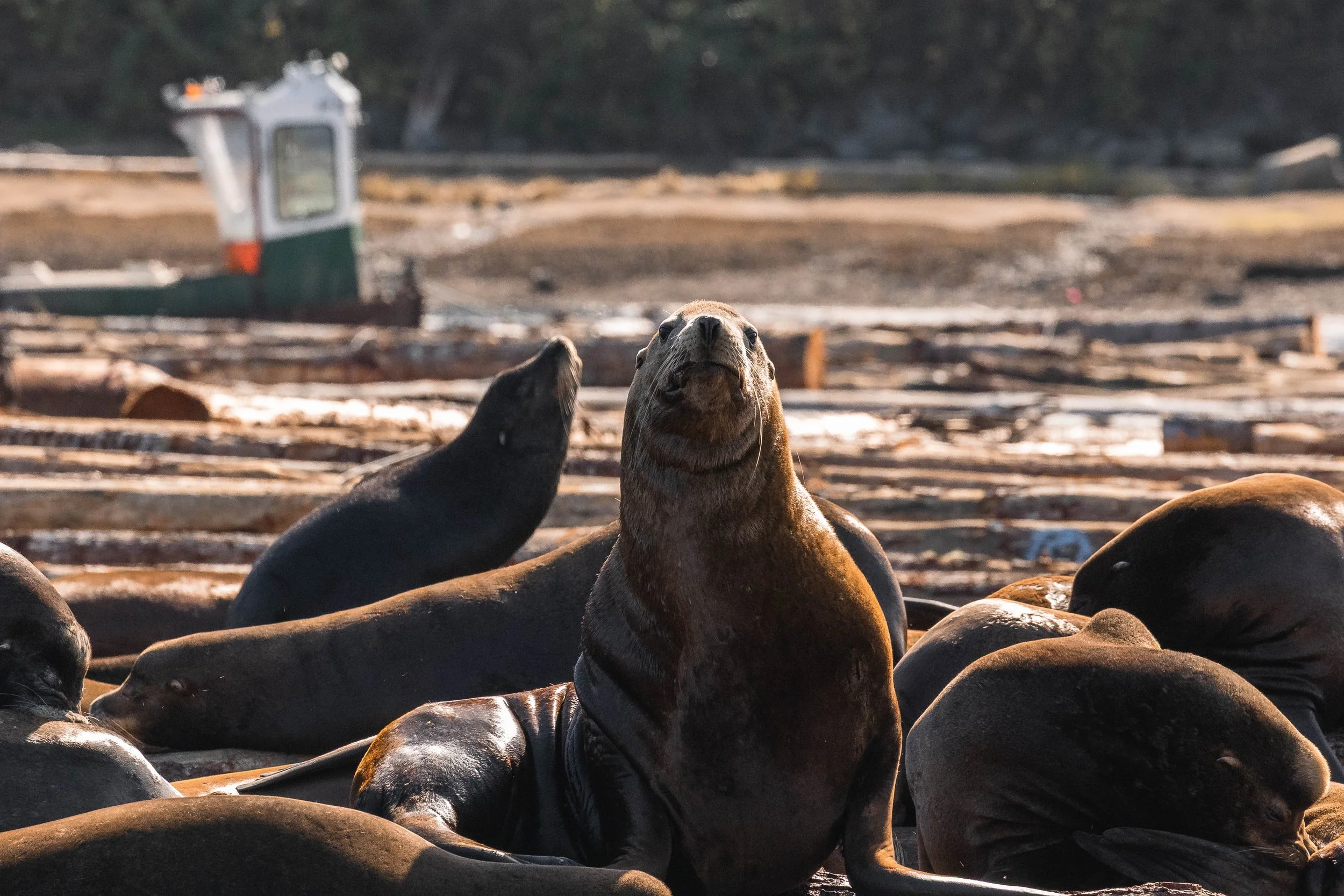September 22, 2025, 10:00 AM - Northern Residents near Vancouver
This morning’s adventure began with our vessel heading north, toward Nanoose Bay, an area that’s seen no shortage of activity over the past few days. The calm, cool air carried that unmistakable ocean scent as we cruised along, the rugged beauty of the Winchelsea Island Archipelago spread out before us. It’s a stretch of coastline that never fails to impress, small rocky islands capped with evergreens, seabirds darting low over the water, and the soft rhythm of the Strait of Georgia rolling beneath the hull.
Despite our best efforts, we didn’t catch sight of any blows or dorsal fins in the northern waters. That’s the magic, and the mystery, of whale watching. Every trip is a search, every horizon holds possibility. So, we turned south once again, running along the Strait until we reached Dodd Narrows. Passing through this narrow tidal channel not only gave us a break from the waves but also positioned us perfectly to cross toward the Southern Gulf Islands and the Vancouver side of the Strait.
Just as we were admiring the calm inside waters, word came across the radio: another vessel had found orca!
Excitement buzzed through the crew as we set our course toward the report. Before long, those familiar black dorsal fins sliced through the surface — the unmistakable sign of orca. But as we watched more closely, we noticed something different. These weren’t the Bigg’s (transient) orca we so often encounter around Nanaimo — they were Northern Resident Orca!
A25s
A61 Surge ♂ (1994)
A85 Cordero ♀ (2005)
A121 Twilight ♂ (2019)
A42s
A42 Sonora/Holly/Uma ♀ (1980)
A79 Current ♀ (2004)
A119 Venture ♀ (2018)
A135 (2024)
A88 Cameleon ♀ (2008)
A103 Albion (2013)
A114 Ashlar (2017)
A94 Mystery ♂ (2009)
This fish-eating population is usually found far to the north, from Campbell River up through the Great Bear Rainforest and beyond. Seeing them down here is always a rare treat. Unlike the Bigg’s orca, who hunt seals and sea lions, Northern Residents focus almost exclusively on fish, especially Chinook salmon, which are rich in fat and energy. Their movements are often tied to the salmon’s migration patterns, and occasionally they bring them south into our local waters.
While our own Southern Resident Orca are critically endangered, with only about 75 individuals remaining, the Northern Residents are a much healthier population, currently estimated at around 325 individuals. Their presence today was a welcome reminder of what a thriving resident orca population can look like.
And there was even more reason to celebrate: among the group were two calves, one born in 2024 and another new arrival from 2025, who hadn’t even been added to the catalogues yet! Discovering a newborn calf is always an exciting moment, a symbol of hope and resilience within the ocean’s intricate web of life.
What makes these encounters especially fascinating is the long evolutionary story behind the orca populations we see. Although the different ecotypes, such as the Bigg’s and the Residents, look remarkably similar, they’ve been genetically and culturally distinct for a very long time.
Recent research suggests that the split between the Bigg’s (mammal-eating) and Resident (fish-eating) orca populations occurred nearly 700,000 years ago. For perspective, Homo sapiens have only been around for about 300,000 years! That means these orca lineages have been developing their unique behaviours, hunting techniques, and even dialects for more than twice as long as our species has existed.
Each ecotype has its own language, diet, and traditions passed down through generations, an incredible example of cultural evolution in the marine world. Seeing the Northern Residents so far south was not just a sighting, but a glimpse into that deep evolutionary story still unfolding in the waters around us.
After spending time with these three matrilines (families within the Northern Resident community), we made our way back across the Strait toward Nanaimo. But before heading for home, we made one last stop at the Harmac Pulp Mill, a favourite resting site for local pinnipeds.
Dozens of Steller and California Sea Lions were hauled out on the log booms, their deep barks echoing across the water. Among them, a Great Blue Heron stood patiently at the edge of the logs, waiting for small fish drawn in by the structure and shade of the floating timbers. It’s a perfect example of how marine and coastal species make use of every opportunity, even human-made ones, to find food and shelter.
As we headed back towards Nanaimo, we were able to reflect on the tour. Though the day had started quietly, it unfolded into something extraordinary: a rare encounter with our northern visitors and a reminder of the vast, interconnected life of the Salish Sea.
Photos throughout the tour were taken by Marine Naturalist Vanessa Vereschahen, which are available to view below!
A79 Current travelling beside A94 Mystery.
Family photo showing A61 Surge, A135, and A42 Holly/Sonora.
A61 Surge, A114 Ashlar, and A85 Cordero surfacing together.
Family photo featuring A42 Sonora/Holly, A69 current, and A135.
A big cuddle puddle with the Northern Residents. Can you spot all 7 dorsal fins?
A85 Cordero surfacing just in front of A94 Mystery.
A42 Sonora/Holly A85 Cordero, and A61 Surge surfacing together.
A family photo with Bowen Island as the backdrop.
A61 Surge in the front, A85 Cordero and A103 Albion in the middle, and A121 Twilight in the back.
A42 Sorona/Holly followed by A94 Mystery.
Another big Family photo with A61 Surge, A103 Albion, A88 Cameleon, A88calf2025, A42 Sonora/Holly, A119 Venture, and A94 Mystery.
A61 Surge, A103 Albion, A88 Cameleon, A42 Sonora/Holly, and A94 Mystery surfacing together.
A42 Sonora/Holly, A103 Albion, A79 Current, and A94 Mystery surfacing together.
A great blue heron fishing from the Log Booms.
A Steller Sea Lion watching as we floated by.
You can really see the size different between the larger Steller Sea Lions and the smaller California Sea Lions here.



